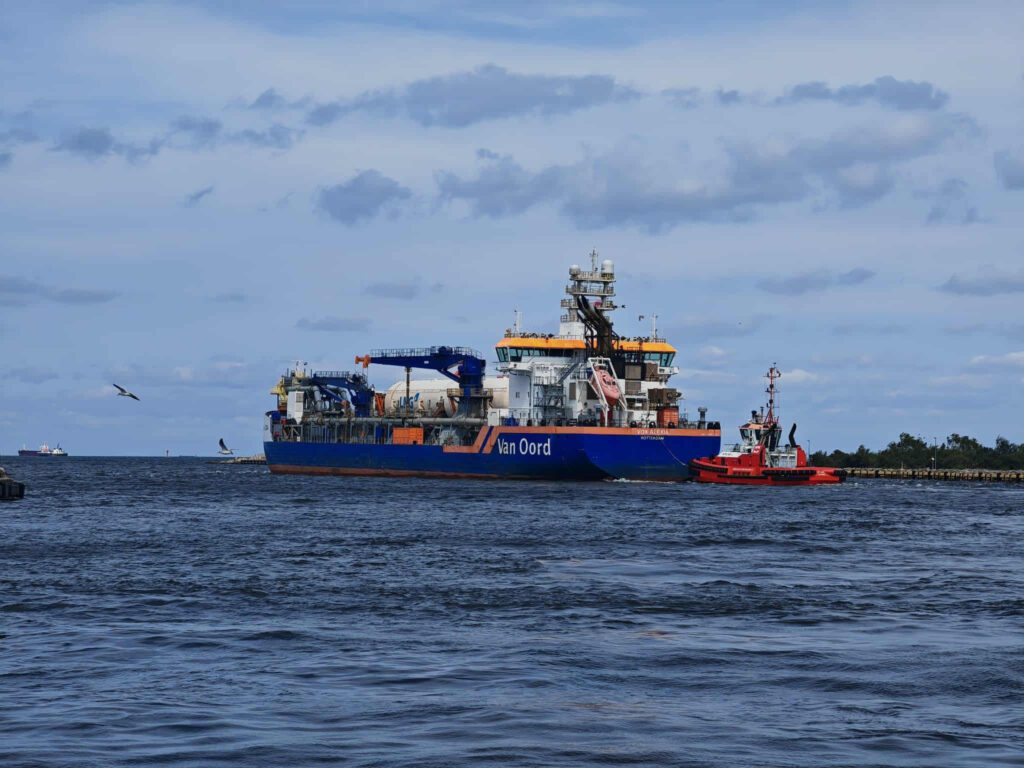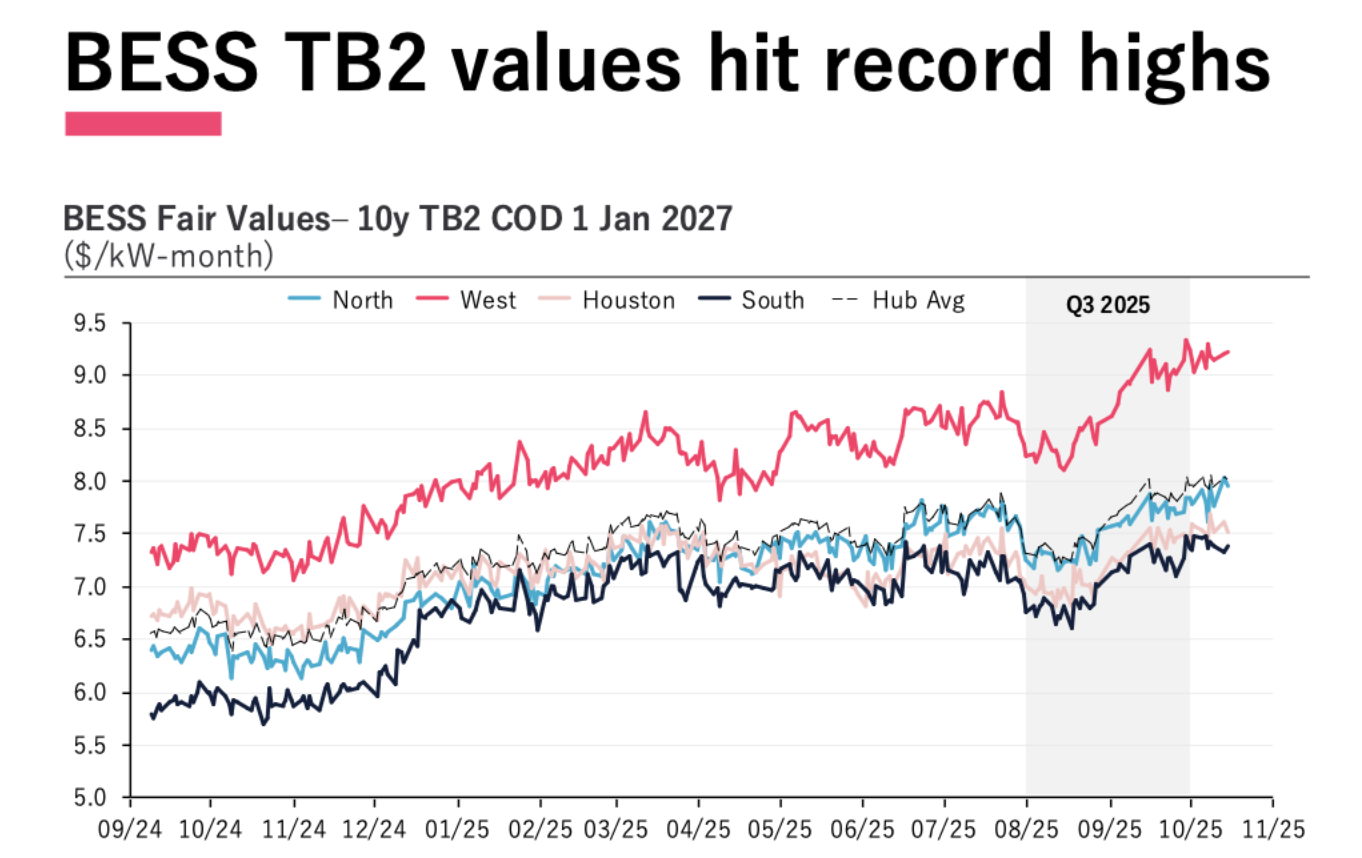Eco Marine Power begins onboard trials of updated marine solar power system – Offshore-Energy.biz

Report on Marine Solar Power Trials and Contribution to Sustainable Development Goals
Project Overview: Aquarius Marine Solar Power Evaluation
Eco Marine Power, a Japan-based technology firm, has initiated onboard evaluation trials for its enhanced Aquarius Marine Solar Power system. This project represents a significant step towards integrating renewable energy into the maritime sector, directly supporting global sustainability efforts. The trials are a collaborative effort involving several key partners:
- Eco Marine Power: Project lead and developer of the Aquarius Marine Solar Power system.
- Merlin Solar Technologies: Provider of the initial high-durability photovoltaic (PV) modules for evaluation.
- Aries Marine: Responsible for the onboard installation of the solar panel framework and modules.
Technological Assessment and Implementation
The primary goal of the 12 to 18-month trial period is to rigorously assess the performance and viability of solar technology in authentic maritime environments. The evaluation will encompass various technologies and components.
Initial Phase: Merlin Solar PV Module Evaluation
The first technology under review is from Merlin Solar Technologies. These panels were selected for their specific attributes which are critical for marine applications:
- Exceptional Durability: Engineered to withstand harsh marine conditions.
- Proven Performance: Utilizes reliable mono-crystalline silicon technology.
- Flexible and Lightweight: Allows for versatile installation on ship superstructures.
- Peel & Stick Deployment: Simplifies the installation process.
Additional PV module technologies from other manufacturers are scheduled for installation and evaluation in subsequent phases of the project.
Alignment with UN Sustainable Development Goals (SDGs)
This initiative directly contributes to several of the United Nations’ Sustainable Development Goals, underscoring the maritime industry’s potential role in achieving a sustainable future.
SDG 7: Affordable and Clean Energy
The project is a clear effort to increase the share of renewable energy in the global energy mix. By developing and proving a viable solar power solution for ships, it promotes clean energy for a sector traditionally reliant on fossil fuels.
SDG 9: Industry, Innovation, and Infrastructure
The Aquarius Marine Solar Power system is an example of technological innovation aimed at upgrading industry infrastructure. It fosters the development of resilient and sustainable shipping infrastructure, reducing the environmental impact of maritime transport.
SDG 13: Climate Action
By advancing zero-emission power technologies, the project directly addresses climate change. Widespread adoption of such systems would significantly reduce greenhouse gas emissions from the global shipping fleet, contributing to climate mitigation efforts.
SDG 17: Partnerships for the Goals
The collaboration between Eco Marine Power, Merlin Solar, and Aries Marine exemplifies a multi-stakeholder partnership. This cooperation is essential for developing, testing, and deploying complex sustainable technologies, demonstrating the effectiveness of partnerships in achieving the SDGs.
Project Objectives and Timeline
Primary Goals of the 18-Month Trial
The comprehensive evaluation is structured to achieve several key objectives:
- To demonstrate the practical application and durability of the Aquarius Marine Solar Power system in real-world operational conditions.
- To gather performance data on an upgraded system management platform.
- To evaluate and compare the effectiveness of various photovoltaic module technologies in a marine setting.
- To support the maritime sector’s transition towards cleaner, more sustainable energy solutions and zero-emission power.
Analysis of Sustainable Development Goals (SDGs) in the Article
-
Which SDGs are addressed or connected to the issues highlighted in the article?
-
SDG 7: Affordable and Clean Energy
The article directly addresses this goal by focusing on the development and trial of a solar power system for ships. The “Aquarius Marine Solar Power” system is a form of clean energy designed to be integrated into the maritime sector, promoting the use of renewable energy sources.
-
SDG 9: Industry, Innovation, and Infrastructure
This goal is central to the article, which highlights technological innovation within the shipping industry. The collaboration between Eco Marine Power and Merlin Solar to test and evaluate “updated” and “durable” photovoltaic (PV) module technologies represents an effort to upgrade industry infrastructure with sustainable and clean solutions.
-
SDG 13: Climate Action
By promoting “zero-emission power technologies for ships,” the project described in the article is a direct action against climate change. The use of solar power on cargo ships aims to reduce their reliance on fossil fuels, thereby cutting down on greenhouse gas emissions, which is a critical measure for climate action.
-
SDG 17: Partnerships for the Goals
The article showcases a multi-stakeholder partnership to achieve sustainability goals. The collaboration between Japan-based Eco Marine Power, Merlin Solar Technologies, and Aries Marine to install and evaluate the solar technology exemplifies the kind of partnership needed to advance sustainable development.
-
-
What specific targets under those SDGs can be identified based on the article’s content?
-
Target 7.2: Increase substantially the share of renewable energy in the global energy mix.
The project’s aim to demonstrate the “practicality and performance” of a marine solar power system is a direct effort to increase the share of renewable energy (solar) in the energy mix of the maritime transport sector.
-
Target 9.4: Upgrade infrastructure and retrofit industries to make them sustainable… with greater adoption of clean and environmentally sound technologies.
The article describes retrofitting a ship with solar panels (“solar panels were fitted by Aries Marine onto custom frames previously mounted on the ship”). This is a clear example of upgrading existing infrastructure with a clean technology to make the shipping industry more sustainable.
-
Target 13.2: Integrate climate change measures into national policies, strategies and planning.
While not a national policy, the project represents an industry-level strategy to integrate climate change mitigation measures. The statement about supporting “the maritime sector’s shift toward cleaner, more sustainable energy solutions” shows an effort to embed climate action into industry practices.
-
Target 17.16: Enhance the global partnership for sustainable development, complemented by multi-stakeholder partnerships that mobilize and share knowledge, expertise, technology…
The collaboration between Eco Marine Power, Merlin Solar, and Aries Marine is a multi-stakeholder partnership that shares technology and expertise to advance “zero-emission power technologies for ships,” directly aligning with this target.
-
-
Are there any indicators mentioned or implied in the article that can be used to measure progress towards the identified targets?
-
Indicator for Target 7.2 (Implied): Renewable energy share in total final energy consumption.
The article mentions that the trials aim to demonstrate the “performance” of the solar power system. Measuring this performance would involve quantifying the amount of energy produced by the solar panels, which can be used to calculate its share in the ship’s total energy consumption.
-
Indicator for Target 9.4 (Implied): CO2 emission per unit of value added.
The article’s focus on “zero-emission power technologies” and “cleaner… energy solutions” implies a goal of reducing CO2 emissions. The evaluation of the system would likely measure the reduction in fossil fuel consumption, which is a proxy for measuring the reduction in CO2 emissions from the ship’s operations.
-
Indicator for Target 13.2 (Implied): Adoption and deployment of clean energy technologies.
The article mentions the “latest deployment of our ship solar power solution” and the plan to install “additional and different types of PV module technologies.” The number and scale of such deployments serve as an indicator of how climate change measures are being integrated into the industry.
-
Indicator for Target 17.16 (Mentioned): Number of collaborating partners.
The article explicitly names the partners involved: Eco Marine Power, Merlin Solar Technologies, and Aries Marine. The existence and functioning of this three-party collaboration is a direct indicator of a multi-stakeholder partnership in action.
-
-
SDGs, Targets, and Indicators Summary Table
SDGs Targets Indicators SDG 7: Affordable and Clean Energy 7.2: Increase substantially the share of renewable energy in the global energy mix. (Implied) 7.2.1: Measurement of the solar system’s “performance” to determine its share in the ship’s energy consumption. SDG 9: Industry, Innovation, and Infrastructure 9.4: Upgrade infrastructure and retrofit industries to make them sustainable… with greater adoption of clean and environmentally sound technologies. (Implied) 9.4.1: Reduction in CO2 emissions through the use of “zero-emission power technologies.” SDG 13: Climate Action 13.2: Integrate climate change measures into… strategies and planning. (Implied): The number and scale of deployments of “cleaner, more sustainable energy solutions” in the maritime sector. SDG 17: Partnerships for the Goals 17.16: Enhance the global partnership for sustainable development… complemented by multi-stakeholder partnerships. (Mentioned): The existence of the collaboration between Eco Marine Power, Merlin Solar Technologies, and Aries Marine.
Source: offshore-energy.biz

What is Your Reaction?
 Like
0
Like
0
 Dislike
0
Dislike
0
 Love
0
Love
0
 Funny
0
Funny
0
 Angry
0
Angry
0
 Sad
0
Sad
0
 Wow
0
Wow
0












































































